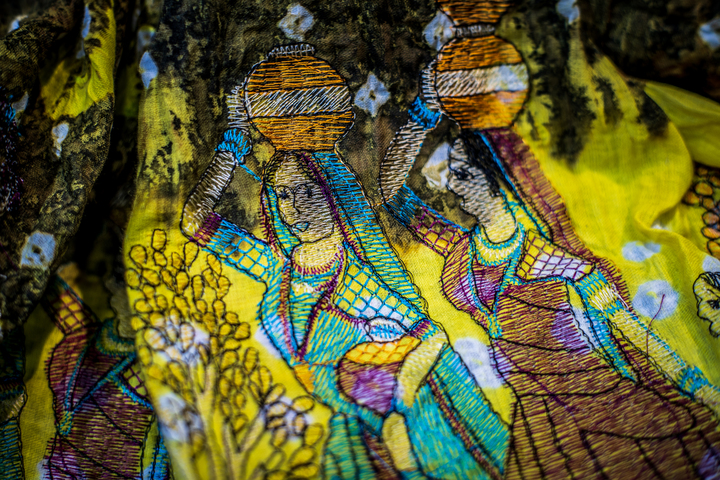California is the state with the highest number of homeless individuals—over 187,000—in the U.S., and holds 24% of the total U.S. homeless population. While pain and hardship—mental illness, domestic violence, poverty, and lack of affordable housing—cause people to fall into homelessness, art can be a way out. For many unhoused individuals, including Inocente, a formerly homeless artist from San Diego, creating is not only a mental escape but a means of survival.
Art has long been proven to positively impact both mental and physical health. One study, called The Connection Between Art, Healing, and Public Health: A Review of Current Literature, conducted by Penn State researcher Heather L. Stuckey and founder of the Foundation for Art & Healing, Jeremy Nobel, explains this clearly: “Art helps people express experiences that are too difficult to put into words.”
Organizations and programs around the world have built on this belief, creating programs that empower people facing hardship to express themselves through art. In the Bay Area, Hospitality House’s Community Arts Program (CAP) was founded in 1969 as the only free fine arts studio in San Francisco open to people whose socioeconomic status might prevent them from pursuing creative work. Since its founding, CAP has hosted exhibitions, promoted creative community building and offered emotional outlets to thousands of participants.
One artist who exemplifies the healing power of art in the face of homelessness is an artist named Inocente. Shortly after immigrating as a child from Mexico to San Diego with her parents and two brothers, her father was deported due to domestic violence. This left Inocente, her mom and her brothers alone in an unfamiliar country. With few resources and no home to return to, the family fell into homelessness.
Luckily, at age 14, Inocente signed up for an art program at her school. While it started as an extracurricular activity and a means to pursue her interest in art, this program quickly became her livelihood.
“Art was easy,” she said. “It was easier than having to deal with homelessness, easier than dealing with the circumstances my family was living in. So art was something that helped me—it didn’t hurt me, it didn’t hurt anybody.”
Eventually, the art program led to her opening her first gallery show at only 15 years old. While this was an exciting endeavor, it was a major commitment for a teenager to handle.
“It was hard to sell those paintings because I had created them from my own imagination. Some of them had personal writing on them. I poured my heart into those paintings,” she said.
Though hosting the gallery was difficult, she does not regret it. Her experience creating her first gallery was turned into an Oscar-winning documentary short film called Inocente (2012). Sharing her art with the world gave her more than just recognition; it gave her purpose and stability.
The messaging of the film is powerful, a reminder to hold empathy and connection.
“Be kind to others. But most importantly, be kind to yourself. A lot of times, we feel like we’re the only ones going through something. But you’d be surprised how many people out there feel the same way,” Inocente said.
Today, at 31 years old, Inocente lives in her own apartment and continues to work as a full-time artist. She also frequently visits schools and conferences as an inspirational speaker, hoping her story may instill hope and connection.
In California, a state overwhelmed by a housing crisis, Inocente’s story acts as a reminder of humanity. While art is often thought of as a symbol of luxury, for housing communities, it is a way to reclaim identity and imagine survival.








+ There are no comments
Add yours